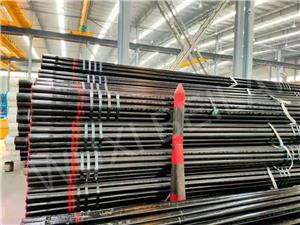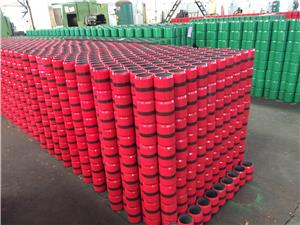How to repair a hydraulic piston rod?
Hydraulic cylinders are key components widely used in the oil and gas industry. They are responsible for converting hydraulic energy into mechanical energy to drive various equipment to work. As an important part of the hydraulic cylinder, the performance of the piston rod directly affects the working efficiency and stability of the entire hydraulic system. However, due to the complex working environment of hydraulic cylinders, piston rods often face problems such as wear, scratches, and bends. If these problems are not repaired in time, they may cause the entire hydraulic system to fail. This article will discuss the repair methods and steps of the hydraulic cylinder piston rod in detail to help readers understand how to effectively restore the performance of the piston rod.
1. Trouble diagnosis and inspection
Before repairing the piston rod, a comprehensive fault diagnosis and inspection must be performed to determine the type and extent of the damage and whether it can be repaired.
Surface damage inspection: First, conduct a detailed inspection of the surface of the piston rod to look for scratches, dents, corrosion, cracks and other signs of damage. Use a micrometer or surface roughness gauge to measure the depth and extent of damage to assess the severity of the damage.
Straightness check: Check whether the piston rod is bent. Straightness deviation can be measured using a ruler or special measuring instrument. If bending is found, subsequent straightening may be required.
2. Disassembly of piston rod
Before repair work can begin, the piston rod needs to be removed from the hydraulic cylinder. This step requires the operator to be familiar with the structure of the hydraulic system and to take appropriate safety measures.
Safety measures: Ensure that the hydraulic system is in a non-pressure state and cut off the power supply or hydraulic power source to avoid accidents during disassembly.
Remove the piston rod: Use a suitable tool to carefully remove the piston rod from the hydraulic cylinder. During the disassembly process, secondary damage to the piston rod should be avoided, and the position and installation sequence of each component should be recorded for subsequent reassembly.
3. Surface repair
Based on the inspection results, decide which repair method to use to deal with the surface damage of the piston rod.
Minor scratch repair: For minor scratches or small area damage, you can use sandpaper or oilstone for manual polishing. When grinding, follow the axial direction of the piston rod to reduce potential impact on the seal. After smoothing the surface, you can also use fine sandpaper to polish it to restore its smooth finish.
Repair of severe damage: If there are deep scratches, dents or corrosion on the surface of the piston rod, it can be repaired by the following two methods:
Electroplating repair: Depositing a layer of metal, such as chromium plating, on the surface of the piston rod through an electroplating process to fill the damage and restore surface performance. After electroplating, precision grinding is required to restore the surface size and finish to its original state.
Welding filling: For deeper defects, welding can be used to repair them. After welding is complete, the welded area is machined to restore the dimensional accuracy and surface finish of the piston rod. The welding material should be similar or identical to the piston rod material to ensure consistent material performance after repair.
4. Piston rod alignment
If the piston rod is found to be bent or deformed during inspection, it needs to be straightened.
Alignment method: Use a hydraulic straightening machine or special straightening equipment to fix the piston rod on the machine tool. By applying reverse pressure, the piston rod is gradually corrected to a straight line. During the alignment process, multiple measurements are required to ensure the accuracy of alignment. The alignment operation must be performed by experienced technicians to avoid stress inside the piston rod or new damage on the surface due to excessive correction.
5. Surface treatment
After the repair is completed, the piston rod usually requires surface treatment to enhance its wear resistance and corrosion resistance to ensure that it can be used for a long time in harsh working environments.
Chrome plating: Chrome plating is the most common surface treatment method, which significantly improves its wear resistance and corrosion resistance by depositing a layer of chromium on the surface of the piston rod. The thickness of the chromium plating layer should be controlled according to the requirements of the use environment, usually between 20 and 100 microns. After chromium plating, the surface of the piston rod should be ground to achieve the designed dimensional accuracy and smoothness.
Nitriding treatment: If you need to further improve the surface hardness and wear resistance, you can choose nitriding treatment. Nitriding treatment is to penetrate nitrogen into the metal surface at high temperature to form a hardened layer. This treatment method can significantly increase the hardness of the surface and enhance its wear resistance, making it suitable for hydraulic cylinders under high load and high temperature environments.
6. Precision grinding and polishing
After surface treatment, piston rods often require precision grinding and polishing to restore their surface accuracy and finish.
Grinding: Use a high-precision grinder to grind the piston rod, adjust its outer diameter, and ensure that its roundness and straightness meet the design requirements. The feed amount and grinding speed should be strictly controlled during the grinding process to avoid excessive grinding, which may lead to surface overheating or the emergence of new defects.
Polishing: After grinding is completed, polish the piston rod surface using polishing paste and polishing wheel to make the surface reach the required smoothness standard. Polishing not only improves surface quality, but also reduces friction and extends seal life.
7. Quality inspection
After the repair work is completed, a comprehensive quality inspection of the piston rod is required to ensure that its performance meets the requirements.
Dimensional accuracy testing: Use tools such as micrometers or three-dimensional coordinate measuring machines to detect the outer diameter, straightness and roundness of the piston rod to ensure that its size meets technical requirements.
Surface finish detection: Use a surface roughness meter to detect the surface finish of the piston rod to ensure that it meets the design requirements.
Hardness testing: For surface-treated piston rods, use a hardness tester to test the surface hardness to ensure that it achieves the expected wear resistance.
8. Reassembly and testing
After passing the test, the piston rod can be reinstalled into the hydraulic cylinder and functionally tested.
Reassembly: Reinstall the repaired piston rod into the hydraulic cylinder following the previously documented steps. During installation, special attention should be paid to the installation position and direction of the seal to ensure that the sealing performance of the hydraulic cylinder is not affected.
Functional test: After reassembly is completed, perform a pressure test and performance test on the hydraulic cylinder to check whether it runs smoothly and whether the sealing is good. During testing, actual working conditions should be simulated to ensure that the hydraulic cylinder can operate normally under various working conditions.
9. Preventive maintenance
The repaired piston rod still needs regular maintenance during use to extend its service life and avoid further damage.
Regular inspection: It is recommended to check the working status of the hydraulic cylinder and its piston rod regularly to detect and repair possible damage in time. Especially for equipment working under high load or harsh environment, regular inspection is particularly important.
Lubrication and maintenance: Ensure that the piston rod surface is always properly lubricated to reduce wear and prevent corrosion. The selection of lubricant should be based on the working environment and equipment requirements to avoid equipment damage caused by the use of inappropriate lubricants.




